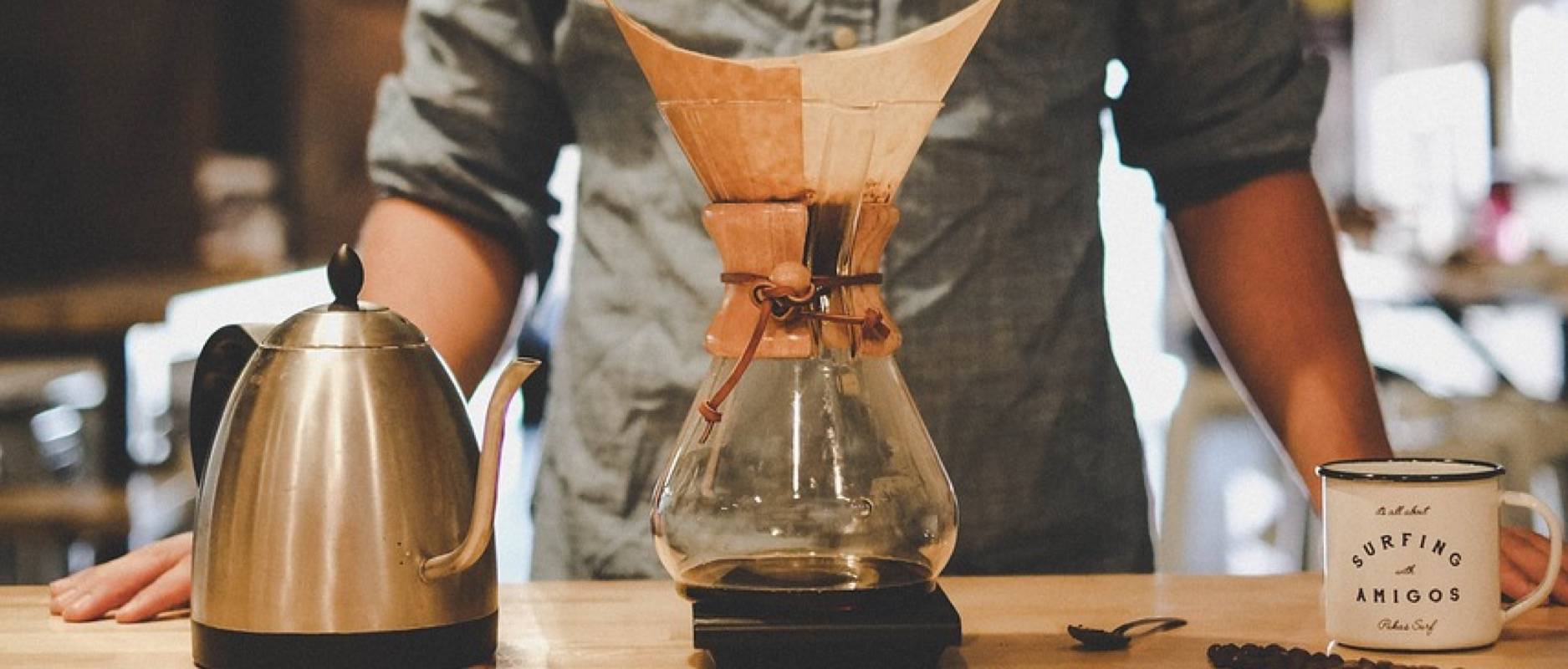

The Chemex works with a proprietary bonded coffee filter (available in both natural, non dyed, brown and regular, bleached, white). The 10 cup model I used basically looked like an oversized science beaker (Chemex was started by a Chemist!) yet with a lot more style. The Chemexis an elegant coffeemaker made out of glass and natural wood and has been produced for forty years (the product is made from International Housewares Corporation in Pittsfield, MA). with the first pour of water using my trusty Krups electrical hot water kettle, a must have for any kitchen stumbled across the Chemex filter drip coffee maker from his favorite online shop. Just as our quest for a simple drip style seemed futile, Dr. Being self described coffee aficionadas we shied away from plug in drip style machines (which are often expensive, yield bland brown liquid, and consume a ton of counter top space) and messy French press machines (which yield a good cup of coffee but often include sediment and are finicky with bean grind). And one recent discussion centered on how difficult it’s been to find an easy to use, drip style, coffee maker for larger amounts of coffee (read more than a few cups). K is married to my wife’s college roommate and we’ve gotten to know each other over the last couple of months).

Recently, I’ve shared my love of coffee with Dr. And all for good reason, I truly love coffee and I couldn’t imagine not taking part in my twice a day coffee ritual (either a latte or Americano in the AM and a single shot espresso after lunch caffeine after 2PM doesn’t work for me). I’ve expressed my love for all types of coffee here on, including stovetop espresso, French press, handheld espresso, single cup Americano, etc. The process is usually repeated again after lunch. For Italians in Europe the morning coffee ritual often takes place at the local bar (short for café) with customers ordering a short or single espresso and consuming it quickly (while standing) at the bar). I should also say that the second thing they both did was kiss their kids (bad breath and all, sorry ma/papa’). I witnessed the coffee ritual first hand growing up in NJ, as the first thing my parents did in the morning was reach for the Bialetti stovetop espresso maker. And like having a daily glass of wine or aperitif, many Italians begin their day with coffee (usually in the form of a single espresso or a cappuccino ). The New Yorker got me thinking about other positive habits that Italians and Italian-Americans take part in on a daily basis (I’m not talking about watching the Jersey Shore on MTV). K close up of "bloom" during brewing process Gladwell attributes the idea of “drinking responsibly” to cultural norms in the aforementioned groups that don’t tell it’s members: “drink and get loud or violent”, “drink until you can’t stand up”, or “drink when you have a problem” as is the case for some college students, tailgating sports fans, or unhappy suburban dads. The reference to the latter group caught my eye and I read intently as Gladwell points out that for both the Bolivians and Italian – Americans a great deal of alcohol is consumed on a day-to-day basis, but unlike many other ethnic groups, the propensity for alcoholism is low (versus the Irish – American class in New Haven, CT of the same generation, for example). Gladwell’s piece was on the drinking habits of two distinct people the Cambra of Bolivia and the Italian-Americans of New Haven, CT (circa mid 1940’s). Gladwell writes clearly and as deeply as a popularizer of big ideas can so I look forward to his articles (you’ll never get all the details with writers like Pinker, Dennett, and Gladwell because they often write for a mass audience – this is just a small critique).

I was flipping through the latest issue of the New Yorker and an article by Malcom Gladwell caught my eye, as it usually does whenever I see his name in the table of contents. K, Chemex in action during brewing process Chemex Coffee Maker


 0 kommentar(er)
0 kommentar(er)
